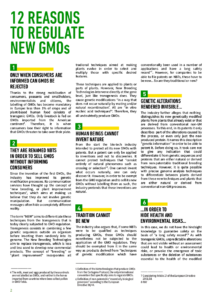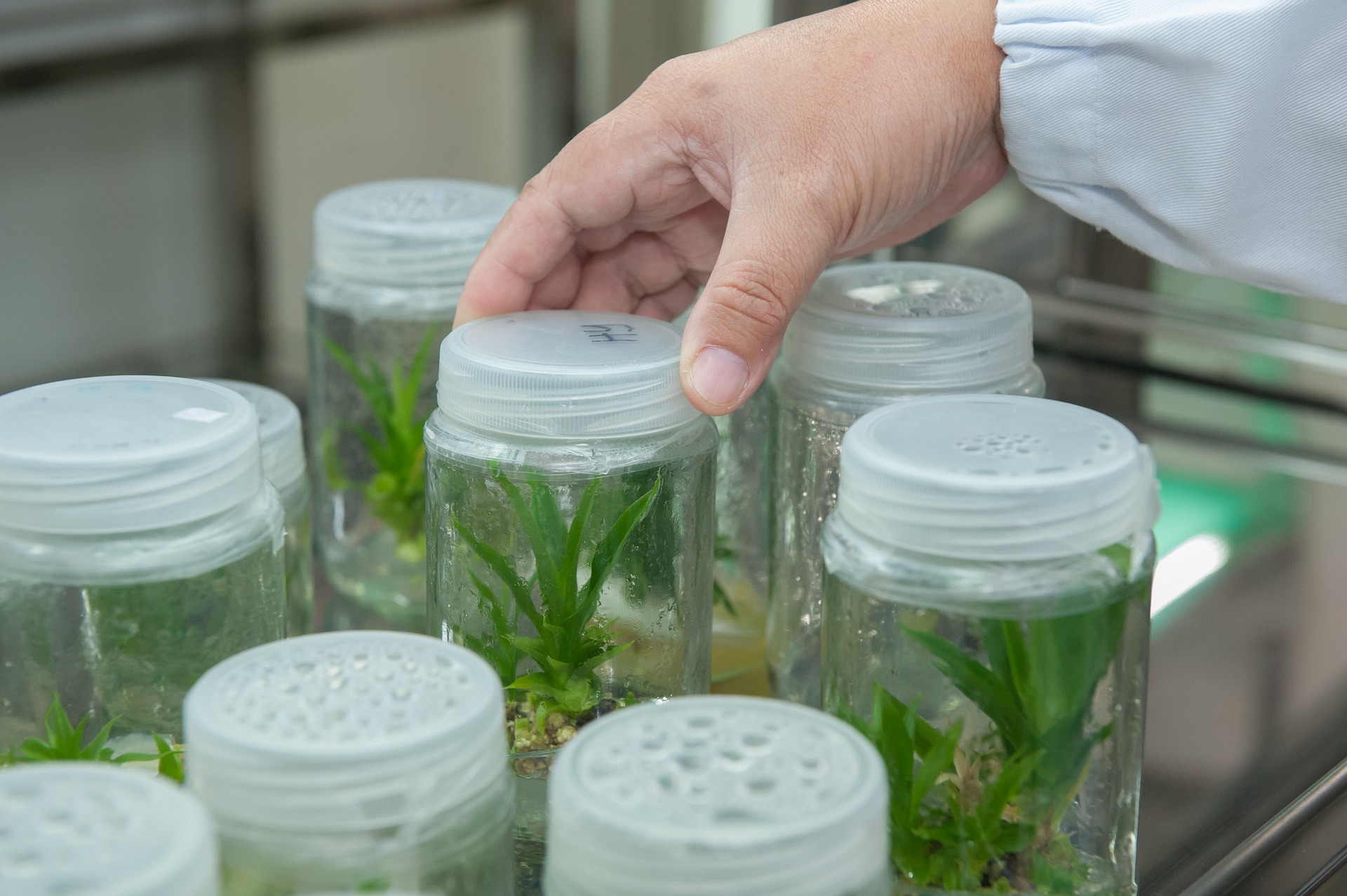GMOs are “organisms, with the exception of human beings, in which the genetic material has been altered in a way that does not occur naturally by mating and/or natural recombination” ~ definition of GMOs in Article 2 of the European Directive 2001/18 that regulates GMOs.

These genetic manipulations can unpredictably generate many unexpected and concealed effects that represent health and environmental risks. The patents they are given threaten the right of peasants and family farmers to use their own seeds, the right of individuals to choose their food, and food sovereignty.
Thus, it should come as no surprise that the people of Europe massively reject GMOs. Are GM plants definitively something of the past, on their way to the dustbin of history along with all the other old useless inventions that are unsafe and even dangerous for humanity and the planet?
A beguiling refrain has been implying this for some time now, promising a series of “new breeding techniques” that would be clean, surgical, fully controlled and without any risk whatsoever. According to this refrain, these New Breeding Techniques, or NBTs, should above all not be classified as GMOs so as not to block their ongoing development. But what are these NBTs really?
The biotechnology industry uses the term “New Plant Breeding Techniques” to refer to a diverse set of genetic engineering techniques claiming that they are not GM when in reality they are. Doing so the Seed biotechnological industry would like to avoid having the products issued by these techniques regulated as GMOs and intends, thus, to hide those GMOs from EU consumers who are fundamentally against GMOs.
The New Breeding Techniques that are currently being developed consist in: (1) artificially inserting into plant cells biological material (genetic sequences and/or proteins) intended to cause genetic alterations; (2) inserting into plant cells a transgene from the same plant family; (3) inserting into plant cells a transgene intended to alter some of their genes, then eliminating this transgene while keeping the new intended and unintended genetic traits it enabled; (4) grafing onto a transgenic plant another plant that is not transgenic. The latter will receive all the genetic and chemical components which are conveyed with the sap of the GM rootstock.
As with transgenic GMOs, the first of these plants are herbicide tolerant. Their cultivation would necessarily increase the presence of pesticide residues in the soil and water, as well as in our food.
European Coordination Via Campesina has released a paper that lists 12 reasons why these ‘New GMOs’ must be regulated.

